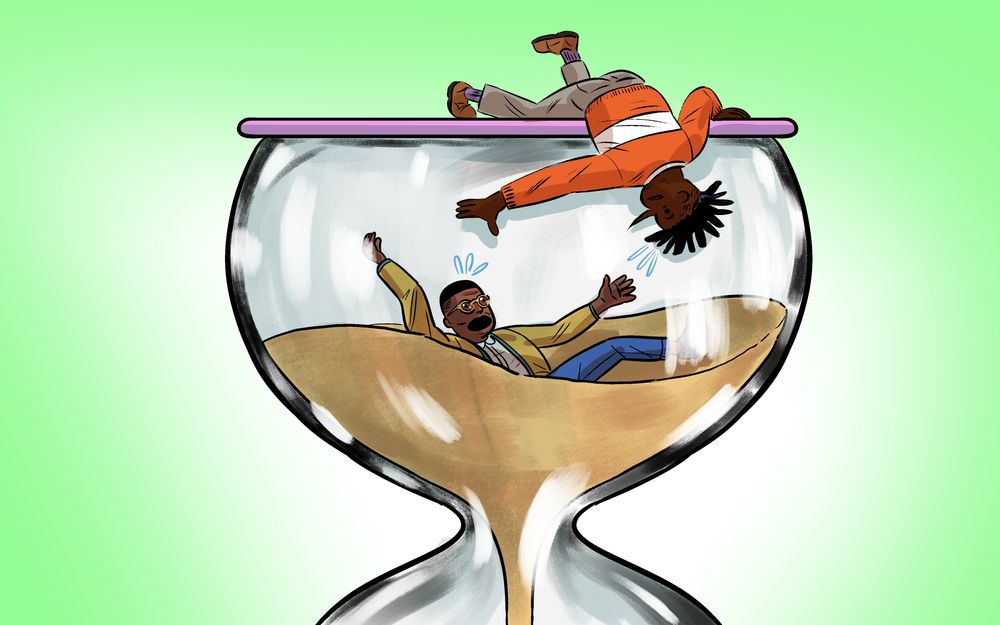When you become a manager of people, there’s always someone who will emphasize that with great power comes great responsibility, as if they’re dropping some novel wisdom on you (and not cribbing from Spider-Man comics). However true this may be, there’s an actual bit of useful advice that isn’t forewarned enough: With great power comes a great frequency of meetings. And quite frankly, for the most part, I don’t want to be bothered talking to any of these people.
The meetings that have crowded my calendar since I was promoted and onboarded to upper management are as varied as Snoop Dogg hairstyles. There are company-wide meetings, senior leadership meetings, departmental meetings, mandatory fun meetings, project update meetings (often with no actual updates), meetings where attendees feel like hostages on a conversation between two people, meetings where Janice hogs the damn mic with endless musings about farfetched hypothetical scenarios, late Friday afternoon meetings (ugh!), meetings that could’ve been emails, meetings that could’ve been canceled, meetings that could’ve been merely a thought that evanesced in the brains of their hosts long before ever being forced upon the rest of us.
So. Many. Meetings. I hate it here!
Folks who’ve spent enough time in corporate America or startup culture realize more often than not, said gatherings are aimless, redundant, prolonged, or some combination of all three. I’ve long suspected that the main reason for most meetings is so people can feel busier than they really are. Weird flex but okay.
If someone were to go lurking on my schedule right now, they’d see what looks like a fucked-up game of Tetris, with only a few half-hour blocks of uncommitted time each day punctuating a deluge of meetings. Some may see an employee of importance; I see piles of actual work being dealt with before and after company hours.
I’ve begun to curve some of these virtual get-togethers by blocking out time on my schedule for brainstorming or my own productivity, so neither falls to the wayside. I have also made a habit of asking a meeting planner whether my attendance is necessary and declining accordingly. And when meetings are my own, I’ll take others’ time into consideration by scheduling them to end five to 10 minutes before the half-hour or hour mark — breathing room before the next unnecessary linkup.
But the meetings that keep me honest are one-on-one vibe checks with my direct reports.
Of all the commitments on my calendar, I find these the trickiest to prepare for. They’re also arguably the most crucial. In the world of millennial corporate culture, one-on-one meetings have become an essential part of how we work today. And depending on how they’re approached by the manager and their direct report, they can actually be productive.
“There’s no code-switching in this meeting. That’s my only rule for when we meet. Keep it real with me for 30 minutes, and I’ll keep it real with you.”
It was initially a bit awkward being on the other side of these meetings with Mitch and Black Karen, seeing as they were very recently my equals on the almighty org chart, but we quickly found a rhythm. The experience was, however, a bit more clumsy for Marcus the Intern, a corporate newbie who didn’t quite understand the point. Honestly, I couldn’t blame him.
“So… what do you want to talk about?” he opened in our first meeting.
I explained that it was a regularly scheduled time to check in and speak on how each of us are feeling about things.
“What if I don’t have anything to talk about?” he said, putting into words a thought I’ve too often pondered in my time as a professional.
“Well, I’ll usually have one or two agenda items of my own we can discuss, otherwise we can reschedule or cancel.”
“Can I talk to you about things not related to work?” Marcus replied. That’s when I knew I needed to tread lightly.
The thing that gives me anxiety about one-on-one meetings is how they can sometimes devolve into therapy sessions where the other attendee is venting about an existential crisis. When that situation is work-related, I can roll up my sleeves and be a balm (or help come up with a resolution if I’m part of the problem). But when things aren’t going well outside of the office and the person wants to use their one-on-one time to get some things off their chest, it can be a testament to the manager’s ability in creating a safe space for their team and a challenge for the manager to uphold it in the moment.
When Marcus the Intern asked me if we could cover things outside of work, I knew the question was loaded. The fact that he and I — two Black men — are able to meet to discuss business on the dime of a corporate entity is rare. I could imagine Marcus the Intern was wrestling with the same insecurities and issues I had when I was starting out. Only difference is, his first boss is Black and, well, me. I figured Marcus wanted to use our weekly time together to discuss these anxieties.
“Bruh,” I said in a way that leaped out so effortlessly it was even a surprise to me. “There’s no code-switching in this meeting. That’s my only rule for when we meet. Keep it real with me for 30 minutes, and I’ll keep it real with you.”
He paused for a second, staring at my crispy Zoom feed on his laptop, before slowly nodding his head. “Dope,” he said. And while the fodder of our conversations will stay between the two of us, I will say this much: Marcus is going to be just fine.


